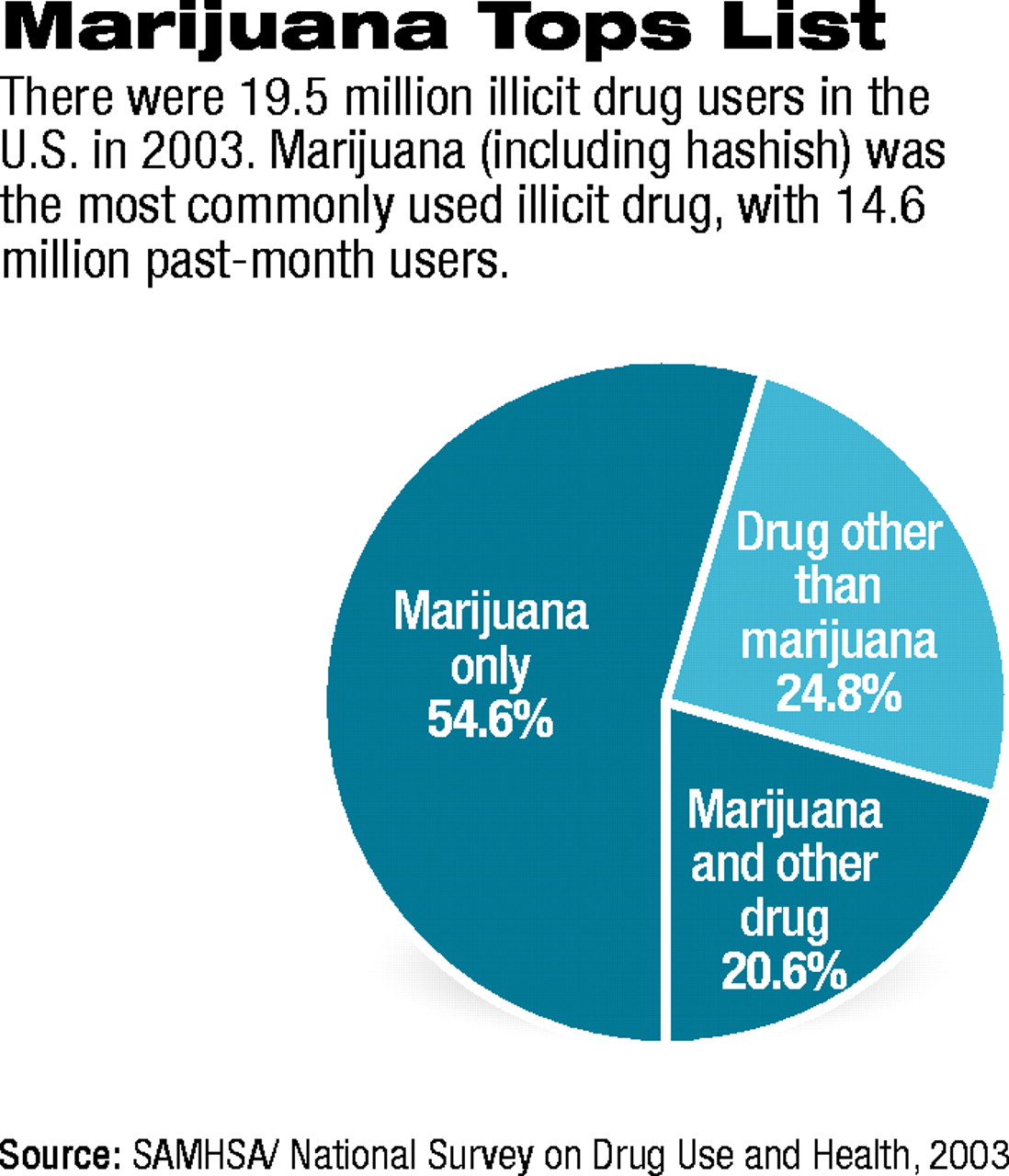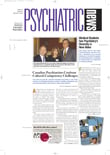While fewer people are using drugs such as marijuana, Ecstasy, and LSD, a greater number are abusing painkillers, according to data released in September by the Substance Abuse and Mental Health Services Administration (SAMHSA).
In 2003 an estimated 19.5 million Americans, or 8.2 percent of those aged 12 or older, were current drug users, defined as having used an illicit drug in the month prior to being interviewed, according to findings from the 2003 National Survey on Drug Use and Health (NSDUH).
Marijuana (including hashish) was the most commonly used illicit drug, with 14.6 million past-month users.
About half of current illicit drug users used only marijuana, while 20.6 percent used marijuana and another drug, and 24.8 percent used a drug other than marijuana in the past month (see chart).
Among current drug users, the most commonly used illicit drug after marijuana was cocaine (2.3 million users). About 1 million Americans used hallucinogens, 570,000 used inhalants, and 119,000 used heroin.
An estimated 6.3 million people aged 12 or older, or 2.7 percent of the population, used psychotherapeutic drugs nonmedically, including tranquilizers, stimulants, and sedatives.
Each year SAMHSA sponsors the NSDUH, which is conducted by staff at RTI International in Research Triangle Park, N.C.
The survey, formerly known as the National Household Survey on Drug Abuse, collects information on the prevalence of substance use in the population, perceptions of risk and availability related to substance use, patterns of use, substance abuse treatment, and mental illness.
To obtain the latest findings, interviewers conducted home visits with 67,784 Americans from January through December 2003. The results were extrapolated to U.S. population estimates.
Researchers Track Small Declines
Declines were noted in certain types of drug use between 2002 and 2003 among youth and adults.
For instance, the number of youth aged 12 to 17 who were projected to use marijuana on a daily basis dropped from 358,000 in 2002 to 282,000 in 2003.
The number of Americans aged 12 or older who reported using a hallucinogen in the year prior to the survey dropped from a projected 4.7 million in 2002 to 3.9 million in 2003.
Ecstasy use also dropped for “past year” users—the number of Americans aged 12 or older who reported using Ecstasy during the year prior to the survey decreased from a projected 3.2 million in 2002 to 2.1 million in 2003, a drop of about 34 percent.
LSD use was cut in half for past-year users, from 1 million in 2002 to 558,000 in 2003.
Use of Painkillers Rises
Researchers found that the number of Americans aged 12 or older who reported having ever taken a prescription pain medication for recreational use rose from 29.6 million in 2002 to 31.2 million in 2003.
Prescription pain medications for which there were statistically significant increases in lifetime use from 2002 to 2003 included the following (all numbers are projected estimates):
Vicodin, Lortab, or Lorcet (from 13.1 million to 15.7 million); Percocet, Percodan, or Tylox (from 9.7 million to 10.8 million); Hydrocodone (from 4.5 million to 5.7 million); OxyContin (from 1.9 million to 2.8 million); methadone (from 900,000 to 1.2 million); and Tramadol (from 52,000 to 186,000).
Drinking, Smoking Rates Steady
About half of those surveyed reported drinking alcohol, which translates to about 120 million people. “Current use” was defined as having at least one drink in the previous 30 days; data also identified binge and heavy use of alcohol.
Nearly 23 percent of Americans aged 12 or older, or 54 million people, participated in binge drinking, which was defined as having five or more drinks on the same occasion at least once in the preceding 30 days.
Approximately 16 million people participated in heavy drinking, defined as having five or more drinks on the same occasion on at least five different days in the preceding 30 days. Each of the alcohol-related findings was similar to 2002 rates.
Almost a third of Americans aged 12 or older (70.8 million people) in 2002 and 2003 were current smokers. Young adults aged 18 to 25 had the highest smoking rates.
More information about the 2003 National Survey on Drug Use and Health is posted online at<www.oas.samhsa.gov/nhsda.htm#NHSDAinfo>.▪

